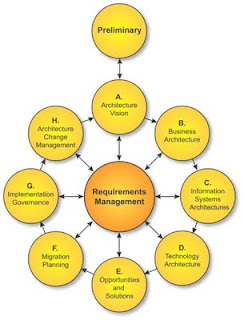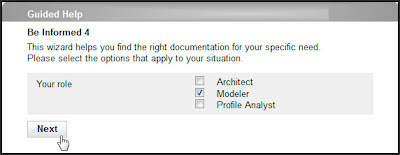Writing effective articles
I am a writer. I have been all my life and I wouldn’t know what to do if I would ever lose this talent. I have been writing about many topics: from welding procedures and high tech greenhouse technology to software implementations and the use of semantic technology. Apart from the writing I enjoy digging into these topics and finding out how things really work and what the benefits are of these new technologies or approaches. But is a talent for writing in combination with an interesting topic enough to form the basis for a successful and effective article? Or do we need more?
In this series of blog posts I will explore the criteria for a successful article, not necessarily providing you with a fix set of rules but rather focusing on best practices, lessons learned and examples from my own work.
On the cover of a magazine
One example from my own work. In 2008 I wrote an article called “The Flexible Intranet” about using semantic technology to create smarter Intranet sites.
How would you measure the success of this article? If you measure the success by the way an article is positioned in the magazine, this article must be rated as very successful because it was chosen by the editors of the Intercom as the cover article for their March 2008-issue.
You could also measure the success of an article by determining how many people have actually read the article. The Intercom is the monthly magazine of the Society for Technical Communication, with 6000 members the largest organization for technical communicators in the world. So 6000 people had this magazine with this cover article on their desk and possibly shared it with their colleagues. So potentially the article could have least been read by 12.000 – 15.000 people all over the world. But what if they didn’t, what if they just skipped the cover article and immediately went for the other stuff? I didn’t send a questionnaire to all readers of the Intercom to find out. But even if I did, can you measure the success of an article by the number of people that have read it?
Another way of looking at the success of an article could be by looking at the references that other people made to this article. When you Google now for this article, you will still find a number of references to it. One of them is in a report called “Analysis and Suggested Redesign of the University of Chicago Press Intranet”, where the author refers to some of my ideas to support his suggestions. Would this indicate success? Someone that actually took the time to read the article and translated my ideas and theories to his own situation.
The secret of a successful article
The secret of a successful article is that there is no secret. There are no hidden rules. There is just a mindset, one clear approach. It’s like Joe Jackson says on his album Body and Soul back in 1984: You can’t get what you want, till you know what you want. If you simply write an article because you feel the urge to do so, at best you will amuse your audience with an intriguing story. How you can take things further and have an effect on your audience?
Follow me in this series of blogs to find out.
In this series of blog posts I will explore the criteria for a successful article, not necessarily providing you with a fix set of rules but rather focusing on best practices, lessons learned and examples from my own work.
On the cover of a magazine
One example from my own work. In 2008 I wrote an article called “The Flexible Intranet” about using semantic technology to create smarter Intranet sites.
How would you measure the success of this article? If you measure the success by the way an article is positioned in the magazine, this article must be rated as very successful because it was chosen by the editors of the Intercom as the cover article for their March 2008-issue.
You could also measure the success of an article by determining how many people have actually read the article. The Intercom is the monthly magazine of the Society for Technical Communication, with 6000 members the largest organization for technical communicators in the world. So 6000 people had this magazine with this cover article on their desk and possibly shared it with their colleagues. So potentially the article could have least been read by 12.000 – 15.000 people all over the world. But what if they didn’t, what if they just skipped the cover article and immediately went for the other stuff? I didn’t send a questionnaire to all readers of the Intercom to find out. But even if I did, can you measure the success of an article by the number of people that have read it?
Another way of looking at the success of an article could be by looking at the references that other people made to this article. When you Google now for this article, you will still find a number of references to it. One of them is in a report called “Analysis and Suggested Redesign of the University of Chicago Press Intranet”, where the author refers to some of my ideas to support his suggestions. Would this indicate success? Someone that actually took the time to read the article and translated my ideas and theories to his own situation.
The secret of a successful article
The secret of a successful article is that there is no secret. There are no hidden rules. There is just a mindset, one clear approach. It’s like Joe Jackson says on his album Body and Soul back in 1984: You can’t get what you want, till you know what you want. If you simply write an article because you feel the urge to do so, at best you will amuse your audience with an intriguing story. How you can take things further and have an effect on your audience?
Follow me in this series of blogs to find out.



Comments
Jan Willem
Kees